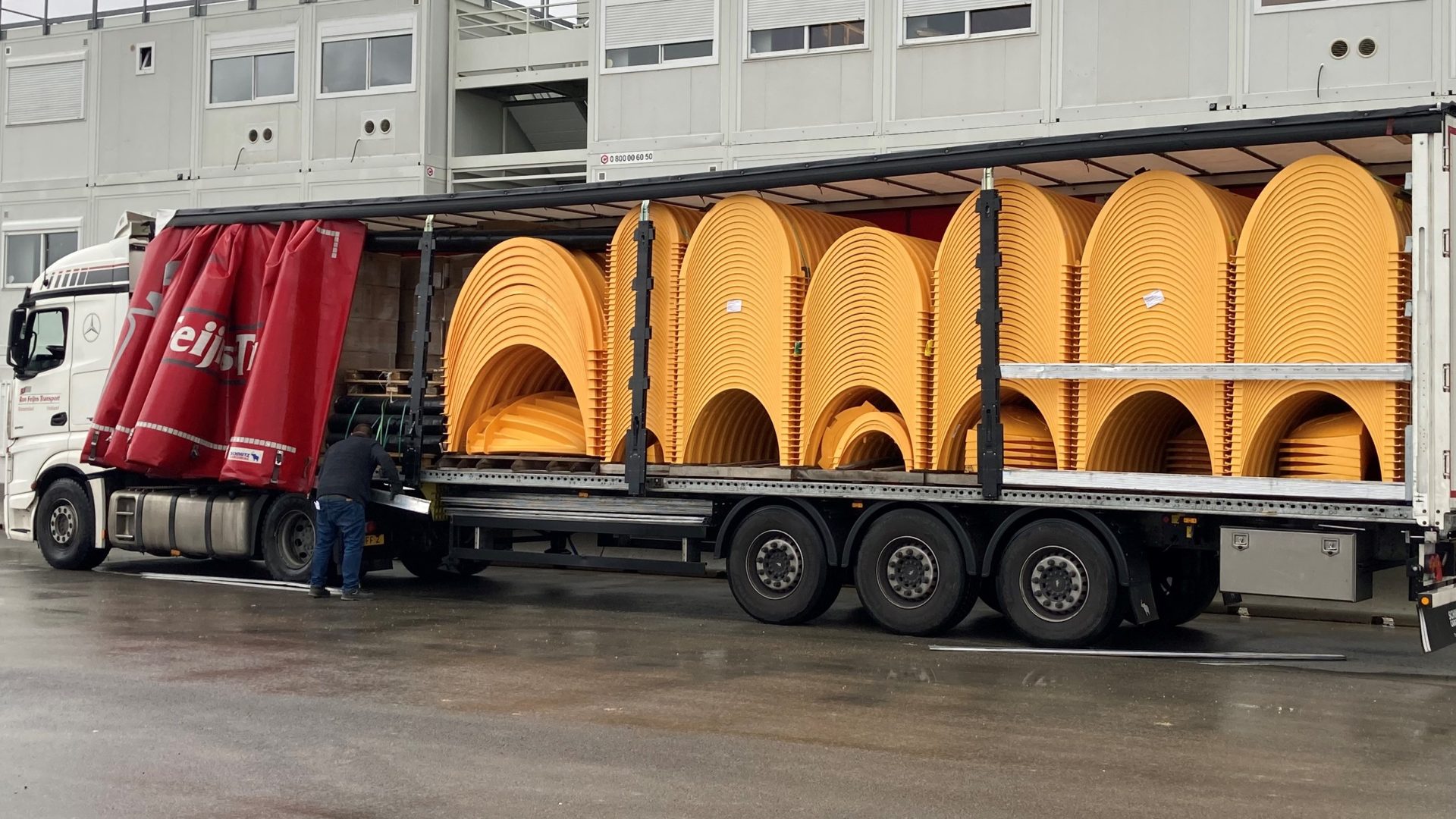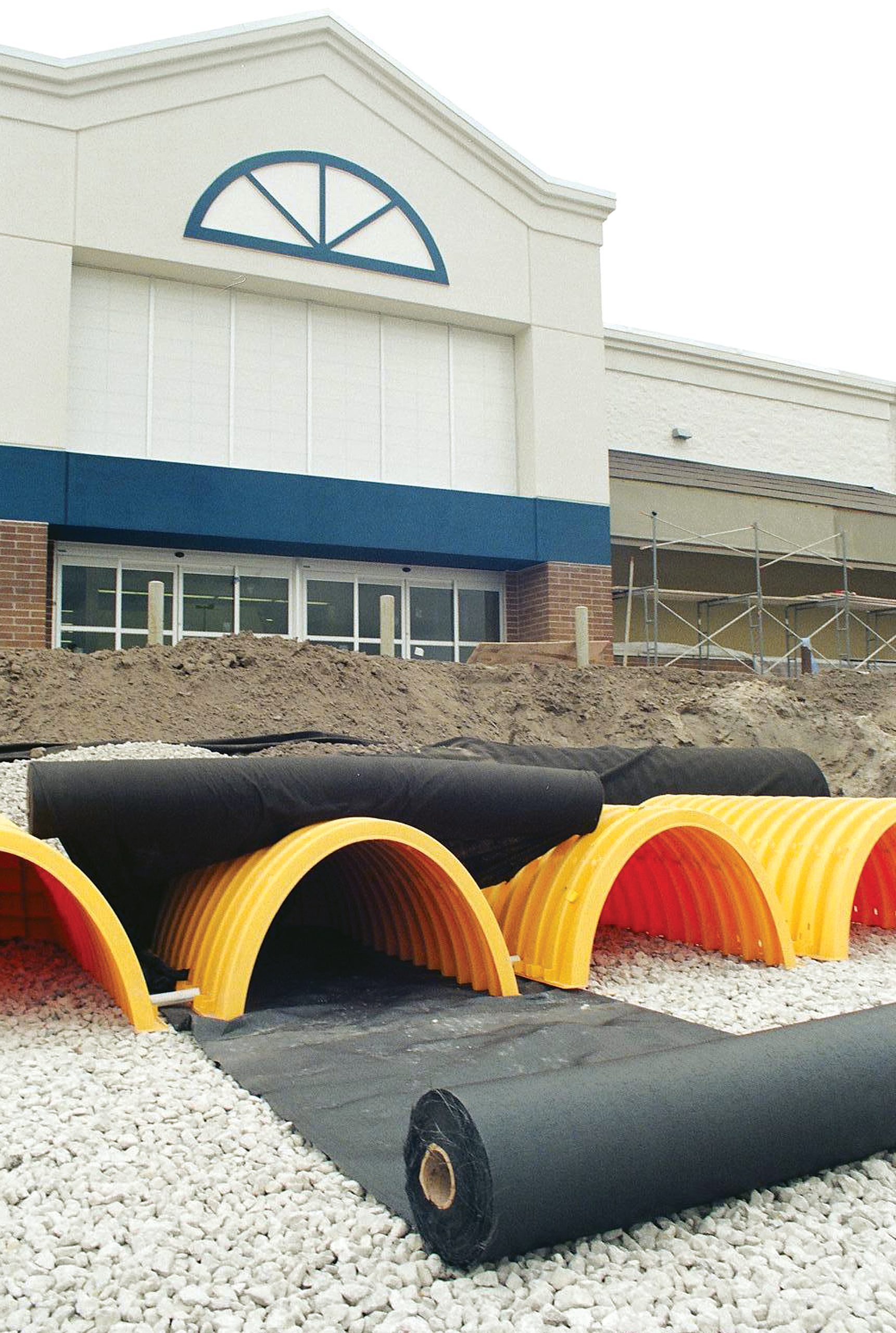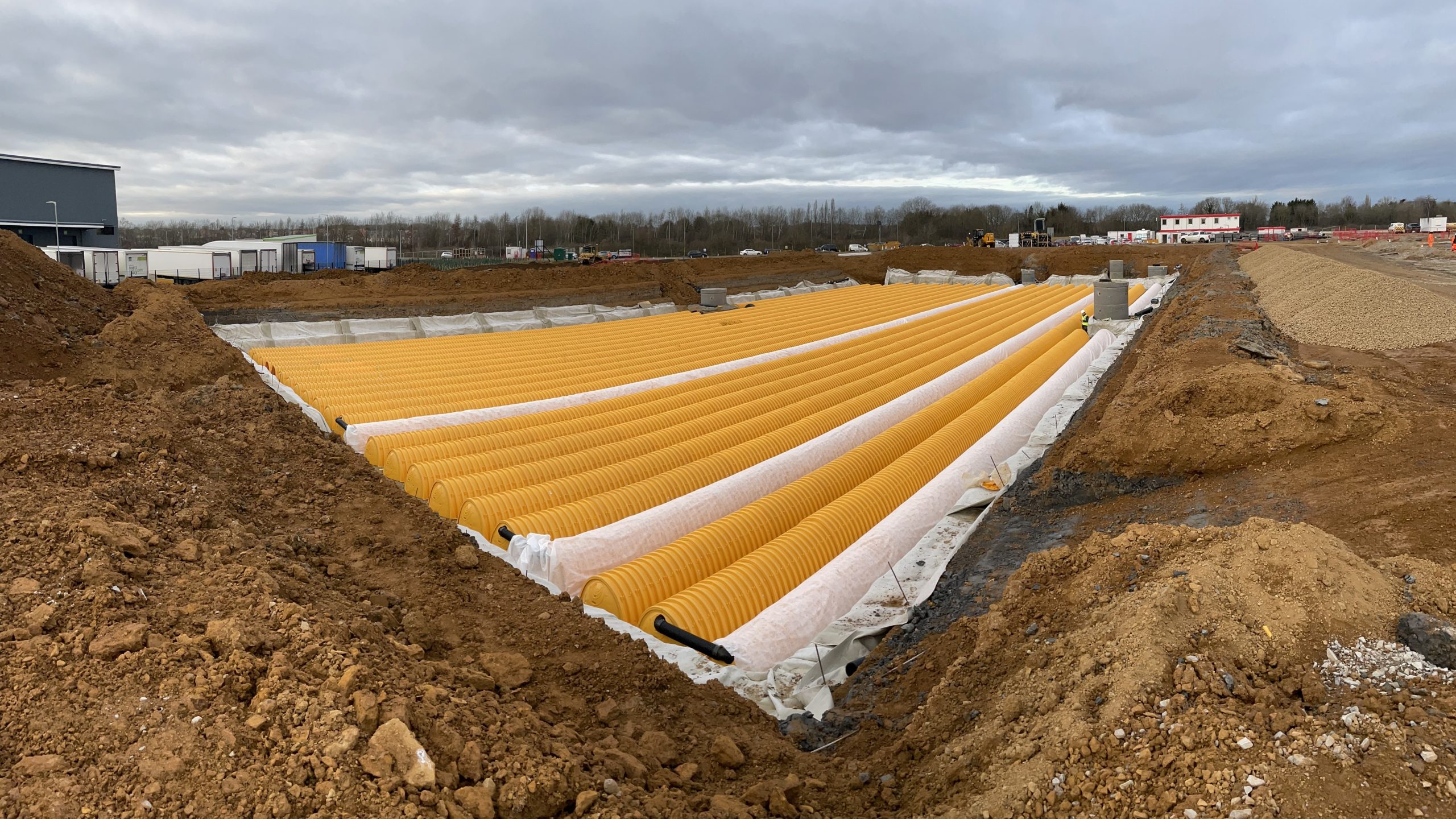
In the second part of two on the choice of underground SuDS attenuation systems available, Stuart Crisp, UK manager of Advanced Drainage Systems (ADS), looks at crates and arches along with the relevant codes and standards to be applied in a product specification.
Arches
Arch-shaped below-ground SuDS attenuation systems are relatively new to the UK, although they have a long track record in other parts of the world. They can be a good choice of attenuation system where a flexible layout is needed since their configuration can be tailored to fit into irregular-shaped areas or around existing obstacles.
These can be a good choice where the SuDS attenuation area is under HGV traffic; the elliptical arch profile chambers ‘shed’ some of the load from the units into the stone. The embedment material is shaped into structural arches and ‘stone columns’ adding to the strength of the system so that the arch-shaped chambers can be used at shallower cover and deeper invert depths than many alternative systems.
StormTech, from ADS, for instance includes an integrated pre-treatment element, which takes out sediment and pollutants from the first flush runoff. Connected to a manhole for ease of inspection and cleaning, this can meet water quality and pre-treatment requirements in a cost-effective way.
Since this type of SuDS attenuation asset is novel for the UK, designers, developers and asset owners should ensure that proprietary products, such as ADS’ meet the required structural performance under the Eurocode regime. Short-term and long-term loading should be considered, including the effect of creep.
Although arch-shaped attenuation structures are now referenced in the Design & Construction Guidance (DCG) for adoptable sewers, which applies to adoptable drainage in England, they are not yet included in many of the older standards and guidance. When this is the case, it is always useful to check whether a product has a relevant third party certification, such as a British Board of Agrément (BBA) certificate.
BBA certification validates a product’s capabilities, and fitness for its intended use. The assessment process typically looks at materials, product geometry, testing, system design, review of factory control procedures, production, installation methods and compliance with relevant regulations.
Arch-shaped below-ground SuDS attenuation structures, because of their relative newness in the UK, will not automatically be included in national or local highways standards, since these cannot be constantly updated to cover new technologies or systems. However, innovative products can be used by applying for a Departure from Standard. To do this, a designer must submit a clear and adequate justification for the departure, proving that the product is fit for purpose and explaining why it is a better solution than a standard one.
| Table of Standards relevant to arches | |
| ISO 4982 | Plastics piping systems for non-pressure underground conveyance and storage of non-potable water — Arch-shaped, corrugated wall chambers made of PE or PP used for retention, detention, storage and transportation of storm water systems — Product specifications and performance criteria
|
| ASTM F2418 | Standard Specification for Polypropylene Corrugated Wall Stormwater Collection Chambers |
| AASHTO LRFD | Bridge Design Specifications Section 12.2 |
| ASTM F2787 | Standard practice for structural design of Thermoplastic Corrugated Wall Stormwater Collection Chambers |
A recent modelling study by ADS has demonstrated that its range of StormTech products, designed to the US standards referenced above, are also structurally adequate when designed to Eurocode standards.
This article has been provided by Stuart Crisp at Advanced Drainage Systems – visit adspipe.co.uk





